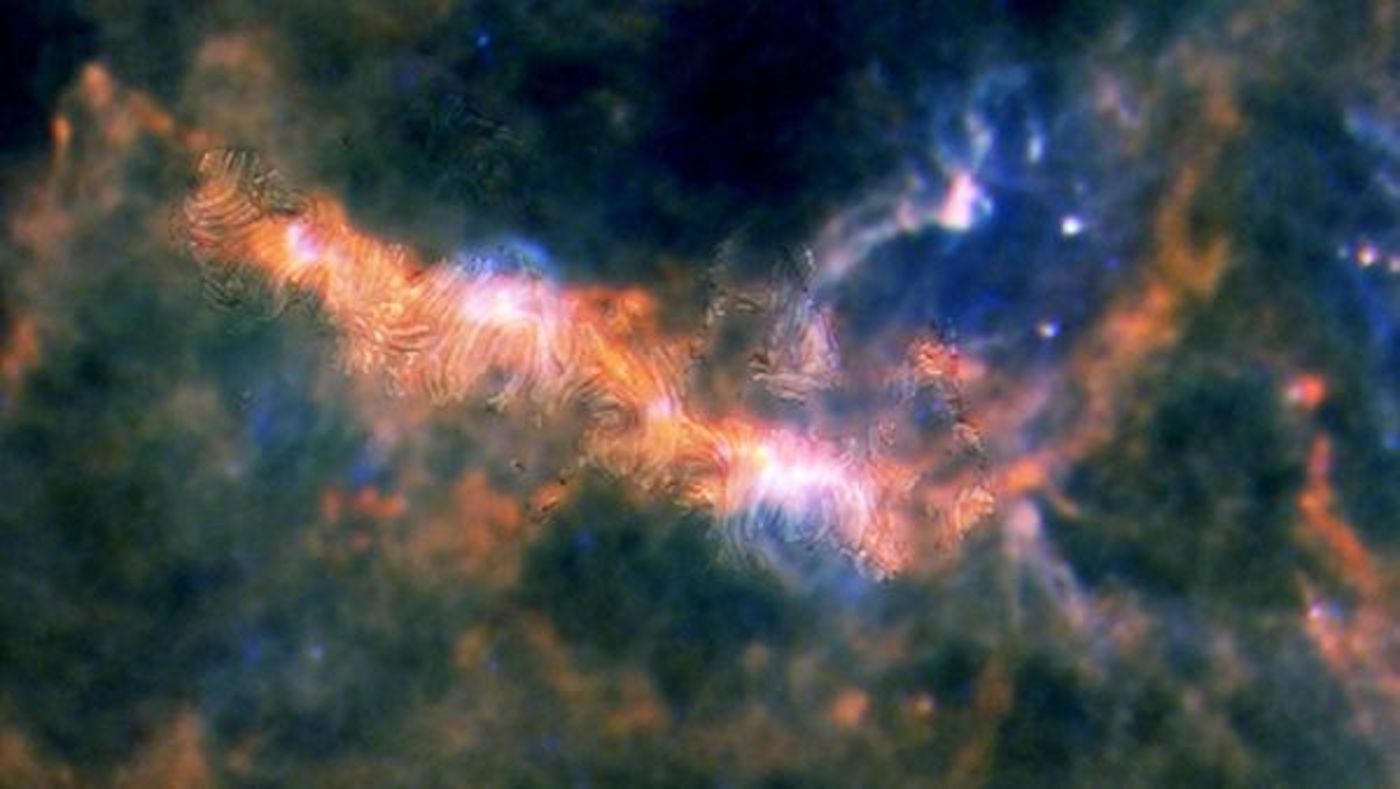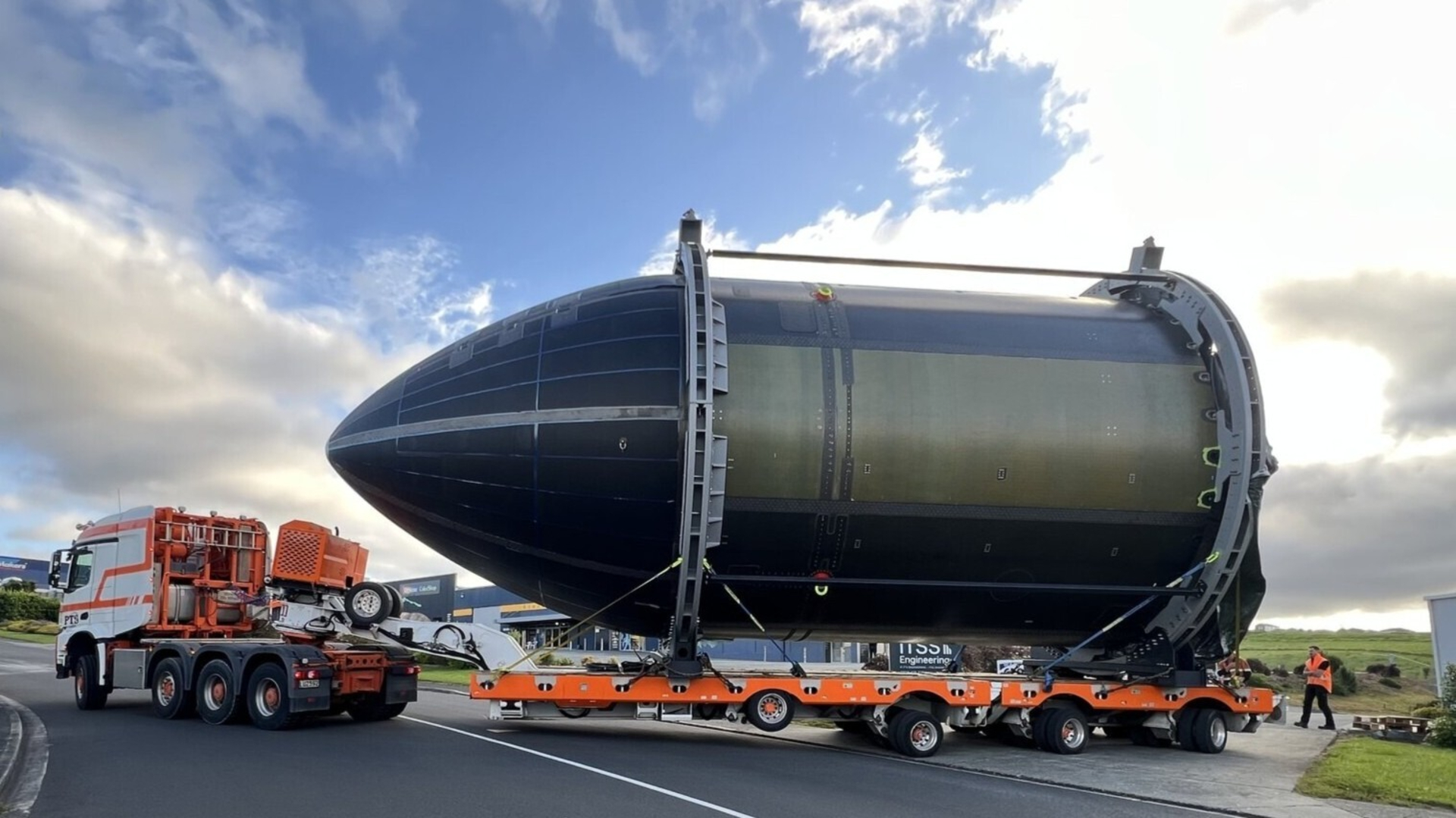Galactic bones inside Milky Way's skeleton are a magnetic mess
Astronomers produced the most detailed map yet of a galactic bone's magnetic field.
Astronomers have produced the most detailed map yet of the magnetic field within a part of one of the Milky Way's spiral arms called a galactic bone — a long filament of dense gas and dust that forms down the middle of the arm of a spiral galaxy. The new map reveals a random mess of magnetic lines, contradicting established magnetic properties seen across the rest of the Milky Way's skeleton.
The Milky Way is a spiral galaxy, and the majority of the galaxy's stars, as well as the cosmic dust that births them, is concentrated into massive, elongated arms that spin around the galactic center. Each arm has a series of galactic bones running through its center, similar to how humans have bones running through the center of our limbs. The gas and dust within these skeletal filaments are so dense that the bones produce their own magnetic field.
In the new study, astronomers mapped out the magnetic field of G47, a galactic bone that is 200 light-years long and 5 light-years wide. To do this, the researchers used the Stratospheric Observatory for Infrared Astronomy (SOFIA), a joint project by NASA and the German Space Agency (DLR). SOFIA is an airborne observatory, which consists of a Boeing 747SP aircraft that's been modified to carry a 106-inch-diameter (2.7 meters) reflecting telescope, aimed out of a massive door in the aircraft, up to an altitude of 45,000 feet (13,700 m). As a result, the telescope can operate above around 99% of Earth's infrared-blocking atmosphere, according to NASA.
Related: Our galaxy is warped, and scientists have no idea why
"We are now able to get so many independent measurements of the magnetic field direction across these bones, allowing us to really delve into the importance of the magnetic field in these massive filamentary clouds," lead author Ian Stephens, an astronomer at Worcester State University in Massachusetts, said in a statement.
The researchers suspect that magnetic fields could potentially play a key role in determining the rate at which stars form inside galactic bones.
"They [magnetic fields] can guide the flow of gas, shape the bones and affect the quantity and size of the densest pockets of gas that will eventually collapse to form stars," Stephens said in the statement. "By mapping the orientation of the fields, we can estimate the relative importance of the magnetic field to that of gravity to quantify how much magnetic fields affect the star formation process."
Breaking space news, the latest updates on rocket launches, skywatching events and more!
The map produced using SOFIA shows that the magnetic field within G47 is extremely chaotic, with no clear pattern or direction. Researchers had expected the magnetic field to be similar to the more uniform fields seen on a larger scale across the Milky Way's arms, in which the magnetic field runs parralel to the arms, said in the statement.
Although the magnetic field of G47 appears random in some areas, it does tend towards being perpendicular in the densest regions along the bone. Other, less-dense regions have more parallel fields, and researchers suspect that these less-dense regions may be feeding gas into the more dense regions where star formation is more likely to occur. However, the team also believes that the magnetic field in these denser regions may be so strong that it actually inhibits star formation in some places by working against gravity, which is trying to collapse the gas into a new star, according to the statement.
The map produced using SOFIA shows that the magnetic field within G47 is extremely chaotic, with no clear pattern or direction. Researchers had expected the magnetic field to be similar to the more uniform fields seen on a larger scale across the Milky Way's arms, in which the magnetic field runs parralel to the arms, said in the statement.
Although the magnetic field of G47 appears random in some areas, it does tend towards being perpendicular in the densest regions along the bone. Other, less-dense regions have more parallel fields, and researchers suspect that these less-dense regions may be feeding gas into the more dense regions where star formation is more likely to occur. However, the team also believes that the magnetic field in these denser regions may be so strong that it actually inhibits star formation in some places by working against gravity, which is trying to collapse the gas into a new star, according to the statement.
G47 is the first of 10 galactic bones that have been targeted for advanced mapping using SOFIA as part of the Filaments Extremely Long and Dark: a Magnetic Polarization Survey (FIELDMAPS) project. The overall aim of the FIELDMAPS project is to compare the magnetic fields of the galactic bones with computer simulations of spiral galaxies, to see how they help shape the overall magnetic field of the Milky Way's skeleton.
The study was published online Feb. 15 in The Astrophysical Journal Letters.
Originally published on Live Science.

Harry is a U.K.-based staff writer at Live Science. He studied Marine Biology at the University of Exeter (Penryn campus) and after graduating started his own blog site "Marine Madness," which he continues to run with other ocean enthusiasts. He is also interested in evolution, climate change, robots, space exploration, environmental conservation and anything that's been fossilized. When not at work he can be found watching sci-fi films, playing old Pokemon games or running (probably slower than he'd like).



